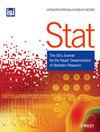成功管理定量研究中的合作伙伴关系指南:团队科学说明
IF 0.8
4区 数学
Q3 STATISTICS & PROBABILITY
引用次数: 0
摘要
数据密集型研究不断扩大,其目标是改善医疗服务、临床决策和患者疗效。定量科学家,如生物统计学家、流行病学家和信息学家,负责将数据转化为健康知识。在学术健康中心,定量科学家对生物医学发现和改善健康状况的使命至关重要。许多学术健康中心都建立了中央定量科学部门,以促进定量科学家的专业发展和开展高质量、可重复的领域研究为双重目标。这些单位随后发展了可与研究人员合作的定量科学家团队。然而,现有文献并未就如何组建此类团队或如何管理和维持团队提供指导。六所院校定量科学部门的领导组成了一个工作小组,研究共同的实践和工具,作为希望通过与研究人员建立长期合作关系来实现上述双重目标的定量科学部门的最佳实践。本报告介绍了该工作组的成果,旨在为面临发展、管理和评估定量科学团队挑战的定量科学部门提供工具和指导。该指南旨在帮助定量科学部门有效地参与并加强整个学术健康中心的研究工作--根据不断变化的研究需求调整其资源。本文章由计算机程序翻译,如有差异,请以英文原文为准。
A guide to successful management of collaborative partnerships in quantitative research: An illustration of the science of team science
Data‐intensive research continues to expand with the goal of improving healthcare delivery, clinical decision‐making, and patient outcomes. Quantitative scientists, such as biostatisticians, epidemiologists, and informaticists, are tasked with turning data into health knowledge. In academic health centres, quantitative scientists are critical to the missions of biomedical discovery and improvement of health. Many academic health centres have developed centralized Quantitative Science Units which foster dual goals of professional development of quantitative scientists and producing high quality, reproducible domain research. Such units then develop teams of quantitative scientists who can collaborate with researchers. However, existing literature does not provide guidance on how such teams are formed or how to manage and sustain them. Leaders of Quantitative Science Units across six institutions formed a working group to examine common practices and tools that can serve as best practices for Quantitative Science Units that wish to achieve these dual goals through building long‐term partnerships with researchers. The results of this working group are presented to provide tools and guidance for Quantitative Science Units challenged with developing, managing, and evaluating Quantitative Science Teams. This guidance aims to help Quantitative Science Units effectively participate in and enhance the research that is conducted throughout the academic health centre—shaping their resources to fit evolving research needs.
求助全文
通过发布文献求助,成功后即可免费获取论文全文。
去求助
来源期刊

Stat
Decision Sciences-Statistics, Probability and Uncertainty
CiteScore
1.10
自引率
0.00%
发文量
85
期刊介绍:
Stat is an innovative electronic journal for the rapid publication of novel and topical research results, publishing compact articles of the highest quality in all areas of statistical endeavour. Its purpose is to provide a means of rapid sharing of important new theoretical, methodological and applied research. Stat is a joint venture between the International Statistical Institute and Wiley-Blackwell.
Stat is characterised by:
• Speed - a high-quality review process that aims to reach a decision within 20 days of submission.
• Concision - a maximum article length of 10 pages of text, not including references.
• Supporting materials - inclusion of electronic supporting materials including graphs, video, software, data and images.
• Scope - addresses all areas of statistics and interdisciplinary areas.
Stat is a scientific journal for the international community of statisticians and researchers and practitioners in allied quantitative disciplines.
 求助内容:
求助内容: 应助结果提醒方式:
应助结果提醒方式:


